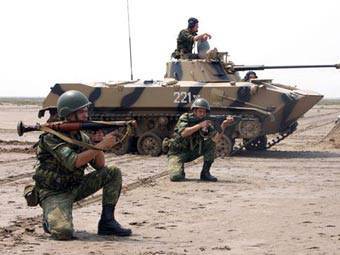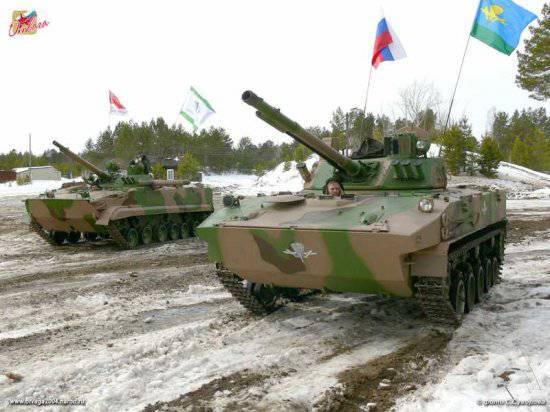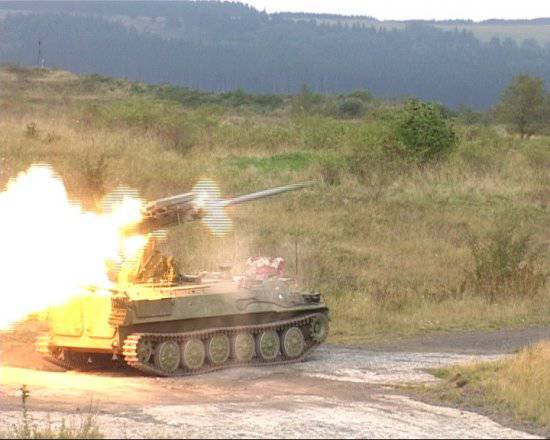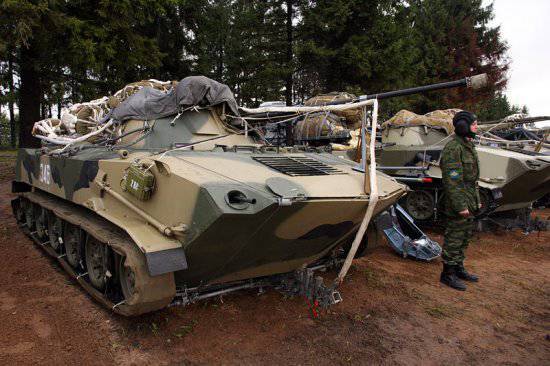Prospects for the rearmament and reform of the Airborne Forces
 Airborne are considered one of the most combat-ready parts of our army. Two wars in Chechnya and the August war 2008 of the year 2008 of the year, with Georgia, confirmed their high status.
Airborne are considered one of the most combat-ready parts of our army. Two wars in Chechnya and the August war 2008 of the year 2008 of the year, with Georgia, confirmed their high status. The Airborne Troops are rightfully the reserve of the Supreme Commander-in-Chief of the Armed Forces. And can form the basis of a mobile rapid reaction force.
But for this you need to make serious structural changes and rearmament of the Airborne Forces. The landing of the collapse of the Soviet Union was almost not replenished with new weapons, and the incoming weapon comes in scanty parties. They are not able to compensate for the obsolescence and technical wear of the equipment in service.
In addition, all the reforms that were carried out in the Russian Federation, were mainly aimed at reducing the number of landing posts. In the USSR, 80-s, the total number of personnel in the state was up to 65 thousand people. Total 7 divisions and 2 individual regiment.
The modern composition of the Airborne Forces
Currently, the number of airborne troops, 2010 data of the year - 34-35 thousand people, of which 4 thousand officers. Composition: 4 divisions (Novorossiysk, Tula, Ivanovo, Pskov), 1-on a separate brigade (Ulyanovsk), 2-a separate regiment, 1-n battalion.
In service
- armored vehicles - airborne combat vehicles BMD-1, BMD-2 “Budka”, BMD-3 “Bakhcha”, BMD-4 “Bakhcha-U”, armored personnel carriers BTR-RD “Robot”, BTR-ZD “Skryhet”;
- artillery maneuvering;
- automotive vehicles: variants based on Ural, GAZ, KAMAZ trucks, UAZ cars;
- small arms: AK-74М, РПКС-74, PC, 7,62 mm machine gun "Pecheneg", machine gun "Kord", SVDS, GP-25 / GP-30, AGS-17 "Flame", ВСС, RPG-7.
Rearmament problem
In January, the 2007 Commander of the Airborne Forces, Colonel-General Alexander Kolmakov, said that during the next 3, the test paratroopers will receive servicemen who will receive new serial weapons - the BMD-4 airborne assault vehicle, the 125-mm 2-XNNXX self-propelled Sprut, a multi-purpose armored pistol, the Sprout, the Sprut 25-X3 self-propelled gun, the Sprut multi-purpose armored tool, and the 43501-mm self-propelled Sprint cannon. Cockleshell, a KamAZ-10 landing vehicle, D-2010 and Arbalet parachutes, as well as new small and special weapons. In XNUMX, the Ministry of Defense of the Russian Federation decided to arm the airborne units with Italian Iveco LMV armored vehicles, which should be produced jointly with Kamaz.
So the combat vehicle of the BMD-4 “Bakhcha-U” was commissioned in the 2004 year. In the 2006, they were in the army (according to the press) - more than 100, in the 2009 year - more than 300. 21 March 2008 of the year on the test site Kurganmashzavod was demonstrated an upgraded version of the machine - BMD-4M. The arrival of this vehicle into service with the Airborne Forces is questionable; in the 2010 year, only an experimental batch of 10 vehicles arrived.
In December 2010, self-propelled anti-aircraft missile systems (ZRK) Strela-10М3 with modernized anti-aircraft missiles began to arrive in the air defense units of the airborne forces. Upgraded installations are designed to replace the outdated ZU-23 anti-aircraft guns.
What Russia needs Airborne
It is currently believed that the airborne forces can:
- quickly reach remote theaters of war (mobility);
- have the ability to deliver sudden blows;
- able to conduct combined arms combat with enemy forces.
But to solve such problems it is necessary to solve several important tasks
- Restore their mobility. Airborne forces have almost lost mobility, military transport aviation strongly degraded and cannot transport troops (in sufficient quantities) to quickly capture and hold strategically and tactically important areas and objects in the rear of the enemy, disruption of its state and military control. Both in the USSR and in the Russian Federation, airborne troops actually use the most prepared units of motorized rifles - an example of Chechnya and Ossetia.
To restore mobility, the Airborne Forces need to be re-equipped: by putting SUVs (including armed ones) of the “Tiger” and “Vodnik” type, light fighting vehicles- “buggies”, and ATVs.
Airborne divisions should receive their aircraft, both transport aircraft and helicopters - attack, multipurpose, transport, light reconnaissance (possibly unmanned).
In the US intelligence Drones are already entering the departments, UAVs should also appear in the Airborne Forces, as scouts, target designators, and light attack aircraft.
- Clearly define the tasks of the Airborne Forces as part of special forces, they should not perform the tasks of the motorized infantry. Only as a last resort - as a reserve of the High Command.
- Translate the Airborne Forces fully on a professional basis. For this, it is necessary that soldiers and sergeants who have entered into a contract receive free housing (in terms of long service in 20-25 years in full ownership, previously only in injury, when a person is not fit for further service and the family of the deceased in the service) and high allowances are twice as high average salary in the country. But to ask them in full, the current contractors, mostly engaged in idleness and drunkenness. In many ways, this is of course the fault of the reformers. Chase them in full.
Then the Airborne Forces will truly be the elite of the Russian Army.
- http://topwar.ru"rel =" nofollow ">http://topwar.ru



Information